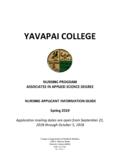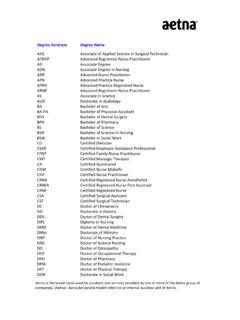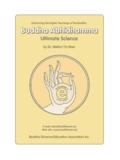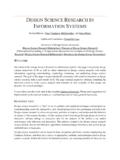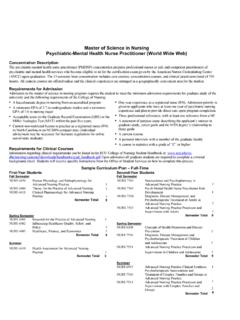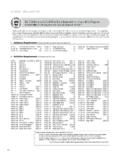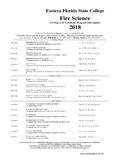Transcription of PISA RELEASED ITEMS - SCIENCE - OECD.org - OECD
1 Document: PISA RELEASED ITEMS - SCIENCE December 2006 Project Consortium: Australian Council for Educational Research (ACER) Netherlands National Institute for Educational Measurement (CITO) National Institute for Educational Policy Research (NIER, Japan) Westat Page 2 Table of Contents S126: Biodiversity .. 3 S127: 6 S128: 8 S129: 11 S195: Semmelweis Diary .. 16 S210: Climate Change .. 22 S212: Flies .. 24 S251: Calf Clones .. 28 S253: Ozone .. 31 S307: Corn .. 37 S409: Fit for Drinking .. 40 S414: Tooth Decay .. 45 S420: Hot 48 S423: Mousepox .. 50 S433: Stickleback Behaviour .. 53 S439: Tobacco Smoking .. 59 S441: 63 S448: Ultrasound.
2 64 S470: Lip 67 S472: Evolution .. 69 S505: Bread 72 S507: Transit of 76 S515: Health Risk? .. 79 S516: Catalytic Converter .. 82 S526: Major Surgery .. 86 S529: Wind Farms .. 90 Source Publications for RELEASED ITEMS .. 94 Page 3 S126: Biodiversity Biodiversity Text 1 Read the following newspaper article and answer the questions which follow. BIODIVERSITY IS THE KEY TO MANAGING ENVIRONMENTAn ecosystem that retains a high biodiversity (that is, a wide variety of living things) is much more likely to adapt to human-caused environment change than is one that has little. Consider the two food webs shown in the diagram. The arrows point from the organism that gets eaten to the one that eats it.
3 These food webs are highly 5 simplified compared with food webs in real ecosystems, but they still illustrate a key difference between more diverse and less diverse ecosystems. Food web B represents a situation with very low biodiversity, where at some levels the food path involves only a single type of organism. Food web A represents a more diverse ecosystem with, as a result, many more alternative feeding pathways. 10 Generally, loss of biodiversity should be regarded seriously, not only because the organisms that have become extinct represent a big loss for both ethical and utilitarian (useful benefit) reasons, but also because the organisms that remain have become more vulnerable (exposed) to extinction in the future.
4 Source: Adapted from Steve Malcolm: Biodiversity is the key to managing environment , The Age, 16 August 1994. FOOD WEB A FOOD WEB B Eucalypt Beetle Spider Lizard Snake Wattle Tea Tree Leaf Hopper Butterfly Larvae Parasitic Wasp Honeyeater Robin Butcher Bird Native Cat Native Cat Butcher Bird Snake Lizard Robin Parasitic Wasp Leaf Hopper Wattle Page 4 Question 3: BIODIVERSITY S126Q03 In lines 9 and 10 it is stated that Food web A represents a more diverse ecosystem with, as a result, many more alternative feeding pathways. Look at FOOD WEB A. Only two animals in this food web have three direct (immediate) food sources.
5 Which two animals are they? A Native Cat and Parasitic Wasp B Native Cat and Butcher Bird C Parasitic Wasp and Leaf Hopper D Parasitic Wasp and Spider E Native Cat and Honeyeater BIODIVERSITY SCORING 3 QUESTION INTENT: Process: Demonstrating knowledge and understanding Theme: Ecosystems Area: SCIENCE in life and health Full credit code 1: A. Native Cat and Parasitic Wasp No credit code 0: Other responses. code 9: Missing. Question 4: BIODIVERSITY S126Q04 Food webs A and B are in different locations. Imagine if Leaf Hoppers died out in both locations. Which one of these is the best prediction and explanation for the effect this would have on the food webs? A The effect would be greater in food web A because the Parasitic Wasp has only one food source in web A.
6 B The effect would be greater in food web A because the Parasitic Wasp has several food sources in web A. C The effect would be greater in food web B because the Parasitic Wasp has only one food source in web B. D The effect would be greater in food web B because the Parasitic Wasp has several food sources in web B. BIODIVERSITY SCORING 4 QUESTION INTENT: Process: Drawing/evaluating conclusions Theme: Biodiversity Area: SCIENCE in life and health Page 5 Full credit code 1: C. The effect would be greater in food web B because the Parasitic Wasp has only one food source in web B. No credit code 0: Other responses. code 9: Missing.
7 Page 6 S127: Buses Question 1: BUSES S127Q01 A bus is driving along a straight stretch of road. The bus driver, named Ray, has a cup of water resting on the dashboard: Suddenly Ray has to slam on the brakes. What is most likely to happen to the water in the cup? A The water will stay horizontal. B The water will spill over side 1. C The water will spill over side 2. D The water will spill but you cannot tell if it will spill at side 1 or side 2. BUSES SCORING 1 QUESTION INTENT: Process: Demonstrating knowledge and understanding Theme: Forces and movement Area: SCIENCE in technologies Full credit code 1: C. The water will spill over side 2.
8 No credit code 0: Other responses. code 9: Missing. water driving direction 1 2 Page 7 Question 4: BUSES S127Q04- 0 1 8 9 Ray s bus is, like most buses, powered by a petrol engine. These buses contribute to environmental pollution. Some cities have trolley buses: they are powered by an electric engine. The voltage needed for such an electric engine is provided by overhead lines (like electric trains). The electricity is supplied by a power station using fossil fuels. Supporters for the use of trolley buses in a city say that these buses don t contribute to environmental pollution. Are these supporters right?
9 Explain your answer.. BUSES SCORING 4 QUESTION INTENT: Process: Demonstrating knowledge and understanding Theme: Energy transformations Area: SCIENCE in Earth and environment Full credit Code1: Gives an answer in which it is stated that the power station also contributes to environmental pollution: No, because the power station causes environmental pollution as well. Yes, but this is only true for the city itself; the power station however causes environmental pollution. No credit code 0: No or yes, without a correct explanation. code 8: Off task. code 9: Missing. Example responses code 1: Yes and No. The buses don t pollute the city which is good, but the power station does pollute and that s not very good.
10 The buses do contribute to the environmental pollution by using fossil fuels but they re not as harmful as normal buses with all their gases. [Note: This answer can be given the benefit of the doubt.] code 0: Well they have no outlet so no harmful smoke goes into the air which can damage the O-zone layer, and having electricity created by fossil fuels is also more environmental friendly. Yes, they are. Because electricity isn t harmful for the environment we only use up our Earth s gas. Page 8 S128: Cloning Read the newspaper article and answer the questions that follow. A copying machine for living beings? Without any doubt, if there had been elections for the animal of the year 1997, Dolly would have been the winner!










